SLVSDQ8B October 2016 – June 2021 TPS54388C-Q1
PRODUCTION DATA
- 1 Features
- 2 Applications
- 3 Description
- 4 Revision History
- 5 Pin Configuration and Functions
- 6 Specifications
-
7 Detailed Description
- 7.1 Overview
- 7.2 Functional Block Diagram
- 7.3 Feature Description
- 7.4
Device Functional Modes
- 7.4.1 Adjusting the Output Voltage
- 7.4.2 Enable Functionality and Adjusting Undervoltage Lockout
- 7.4.3 Slow-Start or Tracking Pin
- 7.4.4 Sequencing
- 7.4.5 Constant Switching Frequency and Timing Resistor (RT/CLK Pin)
- 7.4.6 Overcurrent Protection
- 7.4.7 Frequency Shift
- 7.4.8 Reverse Overcurrent Protection
- 7.4.9 Synchronize Using the RT/CLK Pin
- 7.4.10 Power Good (PWRGD Pin)
- 7.4.11 Overvoltage Transient Protection
- 7.4.12 Thermal Shutdown
- 7.4.13 Small-Signal Model for Loop Response
- 7.4.14 Simple Small-Signal Model for Peak-Current-Mode Control
- 7.4.15 Small-Signal Model for Frequency Compensation
-
8 Application and Implementation
- 8.1 Application Information
- 8.2
Typical Application
- 8.2.1 Design Requirements
- 8.2.2
Detailed Design Procedure
- 8.2.2.1 Selecting the Switching Frequency
- 8.2.2.2 Output Inductor Selection
- 8.2.2.3 Output Capacitor
- 8.2.2.4 Input Capacitor
- 8.2.2.5 Slow-Start Capacitor
- 8.2.2.6 Bootstrap Capacitor Selection
- 8.2.2.7 Output-Voltage and Feedback-Resistor Selection
- 8.2.2.8 Compensation
- 8.2.2.9 Power-Dissipation Estimate
- 8.2.3 Application Curves
- 9 Power Supply Recommendations
- 10Layout
- 11Device and Documentation Support
- 12Mechanical, Packaging, and Orderable Information
Package Options
Mechanical Data (Package|Pins)
- RTE|16
Thermal pad, mechanical data (Package|Pins)
- RTE|16
Orderable Information
6.6 Typical Characteristics
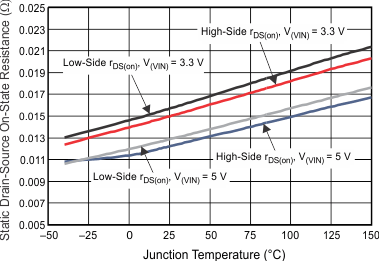 Figure 6-1 High-Side and Low-Side rDS(on) vs Temperature
Figure 6-1 High-Side and Low-Side rDS(on) vs Temperature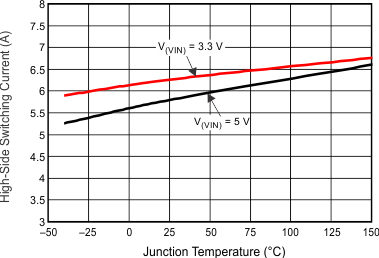 Figure 6-3 High-Side Current Limit vs Temperature
Figure 6-3 High-Side Current Limit vs Temperature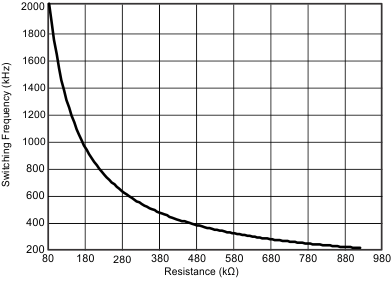 Figure 6-5 Switching Frequency vs RT Resistance, Low-Frequency Range
Figure 6-5 Switching Frequency vs RT Resistance, Low-Frequency Range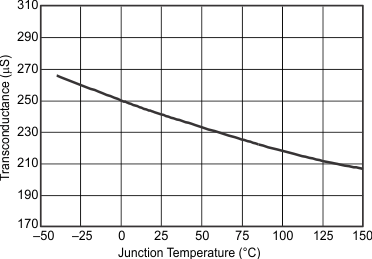
| V(VIN) = 3.3 V |
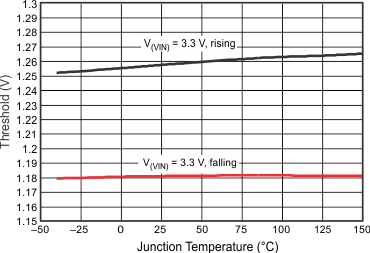 Figure 6-9 EN Pin Voltage vs Temperature
Figure 6-9 EN Pin Voltage vs Temperature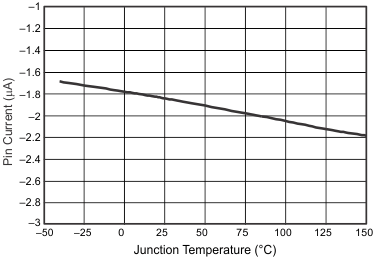
| V(VIN) = 5 V | V(EN) = Threshold – 50 mV | |
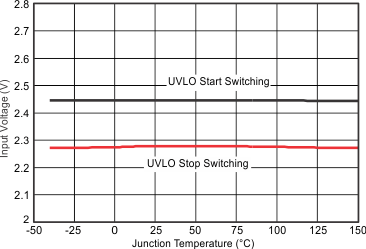 Figure 6-13 Input Voltage vs Temperature
Figure 6-13 Input Voltage vs Temperature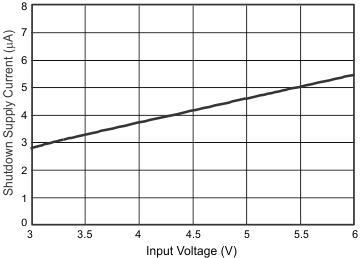
| TJ = 25°C |
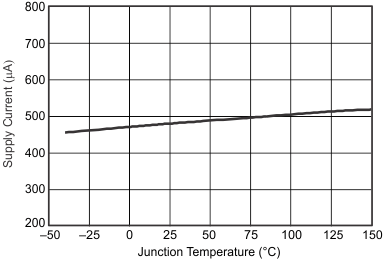
| TJ = 25°C |
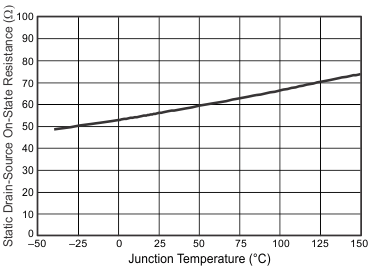
| V(VIN) = 5 V |
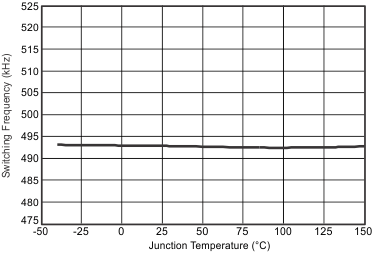
| Rt = 400 kΩ | V(VIN) = 5 V |
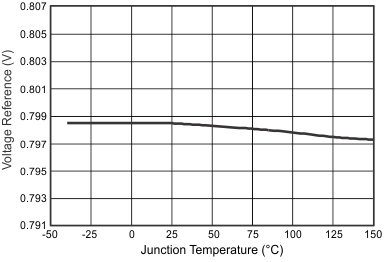
| V(VIN) = 3.3 V |
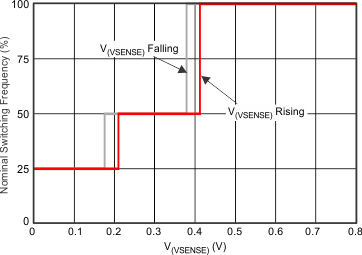 Figure 6-6 Switching Frequency vs V(VSENSE)
Figure 6-6 Switching Frequency vs V(VSENSE)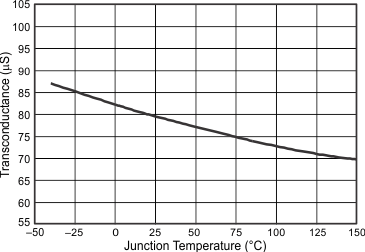
| V(VIN) = 3.3 V |
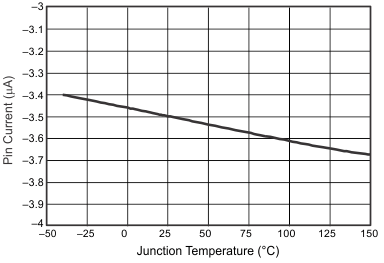
| V(VIN) = 5 V | V(EN) = Threshold + 50 mV | |
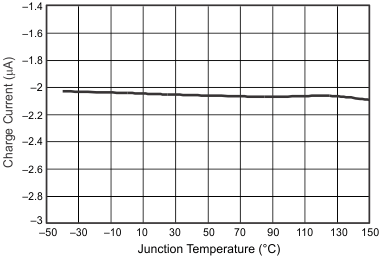
| V(VIN) = 5 V |
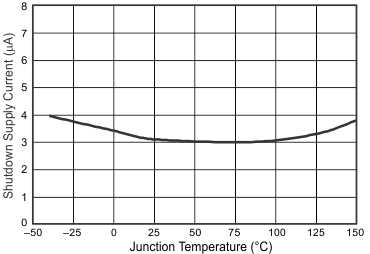
| V(VIN) = 3.3 V |

| V(VIN) = 3.3 V |
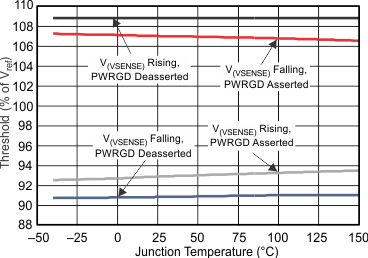
| V(VIN) = 5 V |
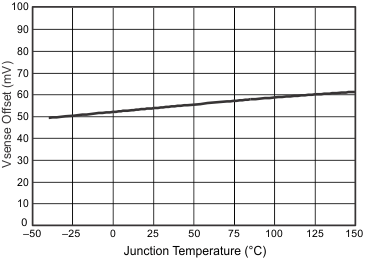
| V(VIN) = 5 V | V(SS/TR) = 0.4 V |